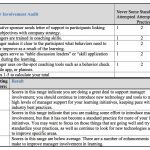leadership case studies - search results
Transforming Culture at the Speed of Light: Go Digital
Training For the Worst
Disasters - whether manmade or the result of nature - are bound to occur, no matter how finely tuned a business is. Resilience training is key to making people more capable of bouncing back quicker and emerging stronger from these shocks and stresses.
Content Under Pressure
Today's employees often feel like they work in a pressure cooker that is ready to explode at any given moment. Some organizations are implementing training programs to help their employees better manage that pressure and improve their performance in the process.
Flipping the Learning Model
BCBSM Empowers Employees
Nurturing a workforce ready to take ownership of the company’s success was a top priority for for No. 5 Training Top 125er Blue Cross Blue Shield of Michigan in 2014.
3 Ways to Pull Learning Through Your Organization
November’s Top Reads
5 Steps to Drive High-Performance Succession Management
Preparing Global Virtual Teams for Success
With proper training, connection, and creativity, true collaboration can be accomplished in global virtual teams.
Top 10 Hall of Fame Outstanding Training Initiatives (Sept/Oct 2014)
For the first time since the creation of the Training Top 10 Hall of Fame in 2008, Training magazine required all Hall of Famers to submit an Outstanding Training Initiative that would be shared with our readers throughout the year. Here are the details of KLA-Tencor’s Situation Room and The Ritz-Carlton Hotel Leadership Center’s Launching Digital Media submissions.



